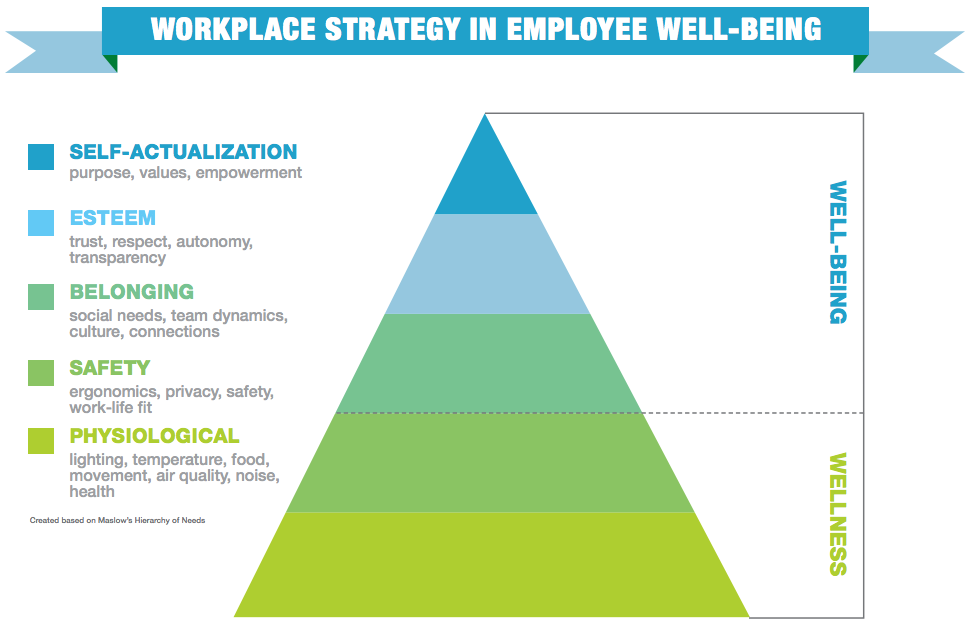Promoting employee wellness has long been of importance to employers. Healthy employees are more productive, more engaged and keep healthcare costs low for an organization. However, in the ten years that have past since the Great Recession, employees are no longer happy to just have a job — they are looking for more engagement and more fulfillment. Because of this fundamental shift, the focus has shifted from employee wellness to employee well-being.
According to Workplace Research, this shift is lucrative for employers. While few companies make the investment, a 10% increase in well-being has been associated with a 5% increase in job performance and drastically reduced healthcare costs.*
What’s the difference between employee wellness and employee well-being?
Employee wellness is focused on physical health and includes things like ergonomics, healthy eating and exercise programs and anti-smoking initiatives. Employee well-being is much more comprehensive. Well-being considers physical wellness, but also focuses on mental, emotional and social health.
How can you implement well-being in your workplace strategy?

Based on Maslow’s hierarchy of needs, the graphic above demonstrates that well-being can only be achieved after the fundamental wellness needs (like physiological and safety needs) are met. Once you’ve accomplished those key steps, here’s how your workplace can support well-being in your organization:
- Belonging
- Offer a sense of community for employees by providing communication tools so onsite and remote employees can easily interact
- Plan onsite touchdown spaces for remote employees so they feel welcome while in office
- Esteem
- Include employees in workplace design process
- Ensure there are private spaces for one-on-one discussions and enclave spaces for collaboration
- Reinforce transparency through glass walls or an open space plan
- Use color, texture and materials to engage senses
- Self-Actualization
- Offer power of choice by providing an array of workspace types that your employees can choose from
- Provide furnishings and accessories that allow for personalization
- Provide easy-to-use and top of the line technology
Want to learn more about wellness vs. wellbeing in the workplace? Connect with an RJE workplace consultant to learn more.
*Data sourced from:
- The Science of Well-Being, The Healthways Center for Health Research, 2011 13. Evaluation of the Relationship Between Individual Well-Being and Future Health Care Utilization and Costs, Population Health Management, 2012
- Evaluation of the Relationship Between Individual Well-Being and Future Health Care Utilization and Costs, Population Health Management, 2012


